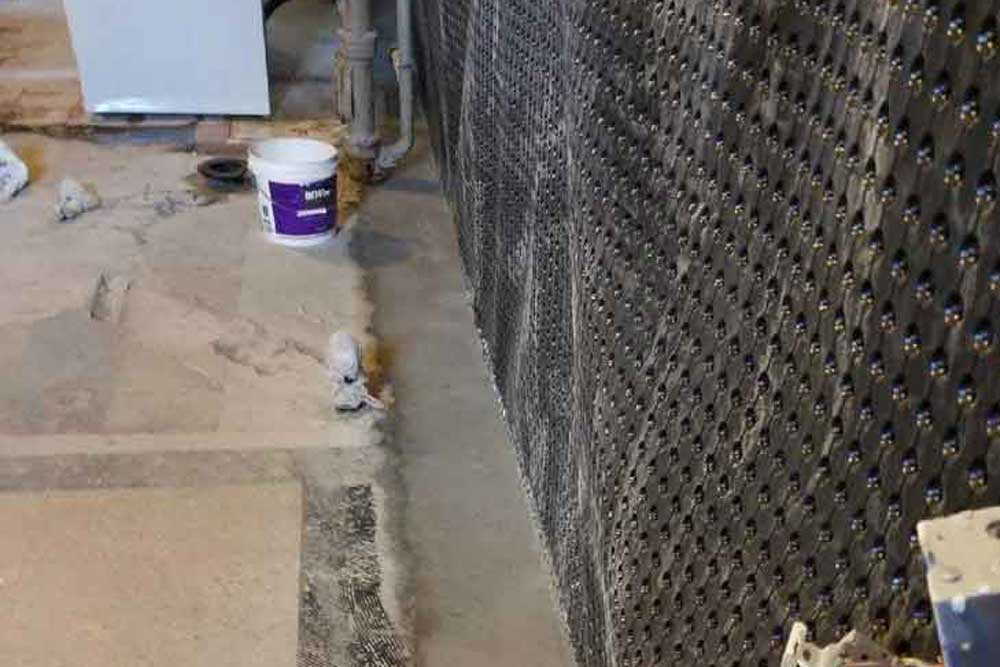Did you know that flooding is the costlier natural hazard in Ontario? So much so that the provincial government has

Home » Basement Waterproofing » The interior basement waterproofing process

When it comes to waterproofing your basement there are instances that there isn’t available access to the perimeter of your exterior foundation walls. For exterior basement waterproofing there needs to be a minimum of 2.5 feet distance away from your foundation walls for the excavation to be feasible. This space allows workers to create a ditch and enough space to perform the installation of the waterproofing and weeping tile system.
Another instance is that the hydrostatic pressure is why water enters the interior of the basement under the footing, sometimes seeping in from the floor area.
In the cases above your option is an interior waterproofing system, which includes the application of a waterproofing barriers on your interior walls, digging out and installing an interior weeping tile system in the perimeter of the basement and adding a sump pump that discards water away from your property.
To determine if interior waterproofing is the right basement waterproofing solution for your home or building you can schedule a free on-site assessment by a basement waterproofing professional.
Interhome Waterproofing has over 15 years of experience in the installation of basement waterproofing systems. We provide exterior & interior waterproofing and weeping tile and sump pump installations. Give us a call today to book your free on-site assessment. We are happy to educate you on the available waterproofing options for your property: 416-836-5253
Book your free on-site inspection and consultation with one of our basement waterproofing experts.
Did you know that flooding is the costlier natural hazard in Ontario? So much so that the provincial government has
Unless your house or building was constructed in the past 10 years chances are you do not have an adequate
The condition of your property’s foundation is the most important thing when it comes to structural integrity. With time, cracks,